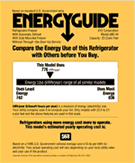Occupancy Sensors
Get Rebates,
Incentives & Services
Introduction
In California, lighting accounts for approximately 25% of home electricity use, and almost 40% of commercial use. As a nation, we spend about 25% of our electricity budget on lighting, or more than $37 billion annually. Occupancy sensors can reduce lighting costs by up to 50% in rooms where lights are frequently left on when no one is around. How? Occupancy sensors can identify when someone is in a room, turn lights on when someone enters, and turn lights off when movement hasn't been detected for a while.
Technology Options
For occupancy sensors, two technologies dominate: infrared and ultrasonic.
Infrared sensors detect temperature changes in a room, and work well where the entire room is within the sensor's field of view. They commonly have a range of approximately 15 feet. When a change in heat is detected, the sensor switches the lights. The drawback is that infrared sensors only work across a limited area and are best for small areas.
Ultrasonic sensors use high-frequency sound to detect motion (even around corners), much like bats do. They monitor the reflection pattern of the sound off objects in the room, and when it changes, they switch the lights on. When the pattern hasn't changed in a while, they switch the lights off. The drawback to ultrasonic sensors is that they can be triggered falsely by objects in the room such as window curtains in a breeze. These sensors have a greater range than infrared sensors and are best deployed in larger areas.
Dual-technology sensors use both methods, increasing accuracy and flexibility, but at a higher price.
Occupancy sensors can be either wall- or ceiling-mounted. Wall-mounted units are appropriate in smaller rooms or equipment rooms. Ceiling-mounted units work well in larger areas such as warehouses.
Efficiency Benefits
In rooms where the lights are frequently left on or rooms are left unoccupied for large periods during the day or night, an occupancy sensor can cut lighting costs by as much as 50%. According to the Federal Energy Management Program (FEMP) of the U.S. Department of Energy, in a small, private office, an occupancy sensor can reduce energy use by almost 30% shaving 100 kWh off the annual energy use. In a large open office area, energy use can be reduced by approximately 10%.
Manufacturers
The Watt Stopper, Novitas, Sensor Switch and Leviton all manufacture occupancy sensors for commercial, residential and industrial applications. Visit their websites for more information.
Purchasing Tips
|











